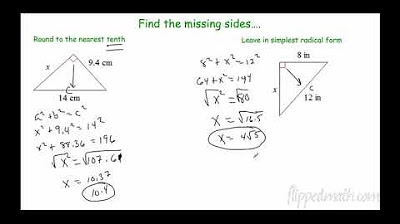ESL Writing - Summarizing and Paraphrasing
Summary
TLDRIn this lesson, Mr. P explains the concepts of summarizing and paraphrasing. Summarizing involves condensing the major ideas of a source into your own words, while paraphrasing involves rephrasing a source's ideas while retaining the meaning and citing the reference. The lesson highlights examples of plagiarism, showing how copying too much of the original text leads to issues. Mr. P provides steps to create proper paraphrases, emphasizing the need for originality in structure and wording. The video concludes with a paraphrasing exercise for viewers to practice.
Takeaways
- 📚 Summarizing involves stating the main ideas of a source in your own words, often in a single paragraph or sentence.
- 🔄 Paraphrasing is presenting an idea from a source using your own words and structure, while still acknowledging the original source.
- 🚫 Using the source's words without quotation marks is considered plagiarism, even if the source is cited.
- ✅ A good summary is written in your own words and captures the essence of the original source.
- ❌ Directly using many words or entire sentences from the original source in a paraphrase is unacceptable and plagiarized.
- 🔑 When paraphrasing, it's crucial to include a reference to the source, such as a page number.
- 🔍 Changing a few words in a sentence is not enough to constitute a paraphrase; the structure and wording must be original.
- 💡 A good paraphrase should be a complete rewriting of the idea, with original sentence structure and wording, and should reference the source.
- 👀 Even if some words from the original source are used in a paraphrase, it's acceptable as long as the structure and wording are original and the meaning is accurately conveyed.
- ⏰ The video challenges viewers to paraphrase a passage about giraffes' eating habits as a practice exercise.
Q & A
What is the main focus of Mr. P's lesson?
-The main focus of Mr. P's lesson is to teach the concepts of summarizing and paraphrasing, providing examples and guidance on how to write a good paraphrase.
What is summarizing according to the lesson?
-Summarizing is the process of stating the major ideas of an entire source or part of a source in a paragraph or sentence using one's own words.
Why is it important to use your own words when summarizing?
-Using your own words when summarizing is important to avoid plagiarism. If words from the source are used, they must be placed within quotation marks.
What is considered plagiarism in the context of summarizing?
-Plagiarism in summarizing occurs when most of the words are lifted directly from the original source without using quotation marks.
What is paraphrasing?
-Paraphrasing is the act of presenting an idea from a source in your own words for use in your writing, while still including a reference to the source.
Why is it necessary to reference the source even when paraphrasing?
-Referencing the source is necessary even when paraphrasing to give credit to the original author and to avoid plagiarism.
What makes a paraphrase unacceptable according to the lesson?
-A paraphrase is unacceptable if it uses too many words or entire sentences directly from the original source without proper attribution.
What are the key elements of a good paraphrase?
-A good paraphrase involves rewriting the idea from the source in original sentences and structure, introducing the author, and concluding with a page reference to the material paraphrased.
How does changing a few words in a sentence differ from a proper paraphrase?
-Simply changing a few words in a sentence does not constitute a proper paraphrase. A proper paraphrase requires a complete rewording of the idea with original sentence structure and wording.
What is an example of an unacceptable paraphrase according to the lesson?
-An example of an unacceptable paraphrase is when the structure of the original sentence is maintained and only a few words are substituted, making it too similar to the original.
What is the final task Mr. P gives to his students after explaining paraphrasing?
-The final task Mr. P gives to his students is to paraphrase the passage about giraffes consuming acacia leaves and hay, and their daily food intake.
Outlines

This section is available to paid users only. Please upgrade to access this part.
Upgrade NowMindmap

This section is available to paid users only. Please upgrade to access this part.
Upgrade NowKeywords

This section is available to paid users only. Please upgrade to access this part.
Upgrade NowHighlights

This section is available to paid users only. Please upgrade to access this part.
Upgrade NowTranscripts

This section is available to paid users only. Please upgrade to access this part.
Upgrade NowBrowse More Related Video

English Expressions: three-word phrasal verbs

Penggunaan Simple Present Tense dan Contohnya | Kampung Inggris LC

Mastering the Nominative Case in German: A Complete Guide! (Beginner / A1-A2) - 1080p/Full HD 🔥

Geometry – 7.1 Pythagorean Theorem and Its Converse

Symmetrical Name Monsters with Mr. Snyder

Rounding and Working with Significant Figures in Physics
5.0 / 5 (0 votes)